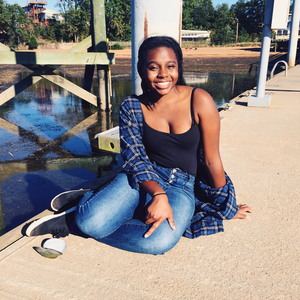It’s that time of year again: Passover. If you’re like Maris, then you have been celebrating Passover your whole life. But if you’re like Faith, then your knowledge of Passover begins at the Dreamworks’ movie The Prince of Egypt and ends at the Rugrats Passover special. Maris’s knowledge is accurate (hopefully) and Faith is guessing based on google and her movie references. Enjoy our playful explanation of Passover.
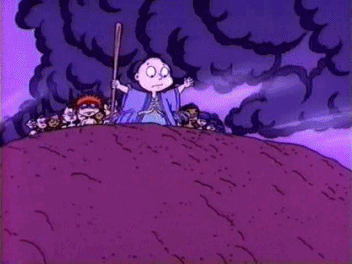
GIF courtesy of Dara Lind
Passover:
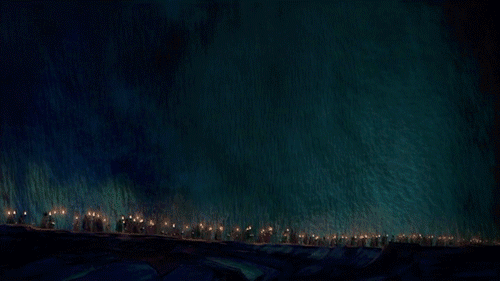
GIF courtesy of tumblr.com
Faith: It’s not the one with the dreidel. It’s the one that celebrates when Moses showed up with a staff and led the Hebrew people out of Egypt. There were some plagues and God was like, “Put blood on your door if you want to avoid it,” and then he said, “Forget to put the yeast in the bread because you have to leave ASAP.”
Maris: Passover is the holiday to commemorate the Jews’ exodus from Egypt. We were freed from being the Pharaoh’s slaves by Moses, who led the Jews to freedom by walking through the desert for 40 years. Because Pharaoh decided somewhat randomly to FINALLY let the Jews go, they had to leave quickly before he changed his mind, which meant there wasn’t enough time for bread to rise. So, that’s why Jews eat matzah, or unleavened bread, to remember what our ancestors carried with them to the Holy Land.
1. Matzah (or Matzoh)
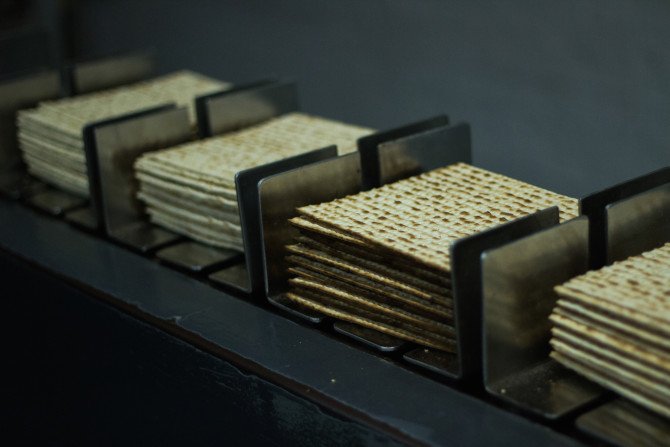
Photo by Liz Unger
Faith: The Hebrews forgot to put yeast in the bread and now no one puts yeast in the bread. It’s probably the only Passover related word I know and I think it’s a soup of some sort.
Maris: This is one of the main symbols of Passover—it represents the unleavened bread that Jewish ancestors had to take with them when they left in a hurry to flee the Pharaoh and walk in the desert for 40 years to the promised land, Israel.
2. Seder
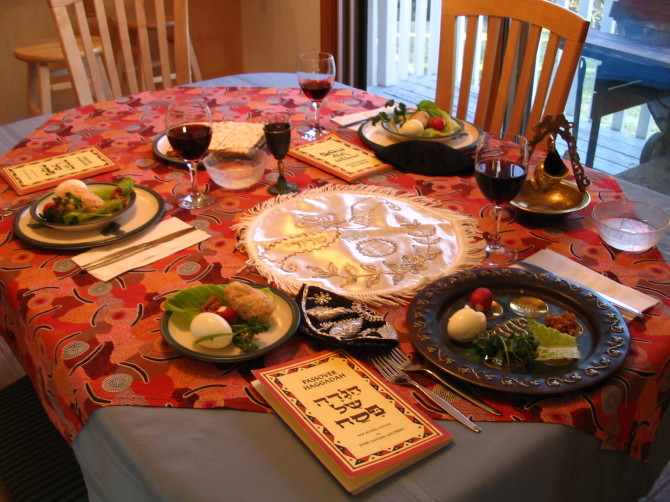
Photo courtesy of wikipedia.com
Faith: The whole family eats and prays and eats again. Based on the complaints of my Jewish friends, this ceremony takes hours.
Maris: The Seder is the main part of celebrating Passover. It is essentially a huge meal where we eat tons of good food and read from a book called the Haggadah, which tells the story of Passover. There are two main Seders during the first two nights of Passover, but orthodox Jews perform a Seder during the end of Passover as well.
3. Bitter Herbs
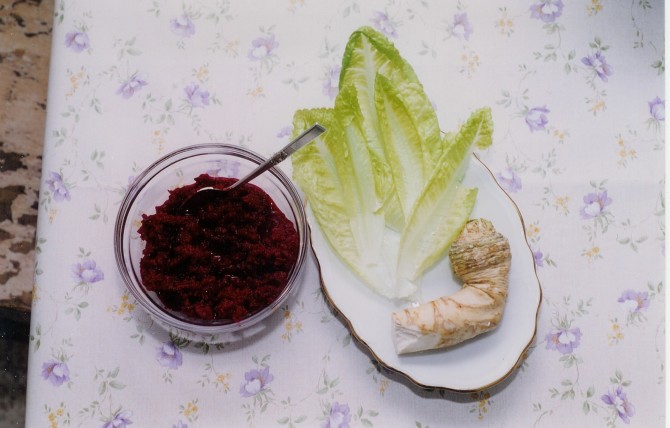
Photo courtesy of wikipedia.com
Faith: The Egyptians were bitter about the Hebrew people leaving before and after they left. Jewish people eat rosemary and basil to remind themselves to never be that petty.
Maris: These are a part of the Seder plate, which has various foods on it that represent different aspects of the exodus from Egypt. The bitter herbs serve to remind us of our slavery in Egypt. It is usually a horseradish root or something like that.
4. Shank Bone
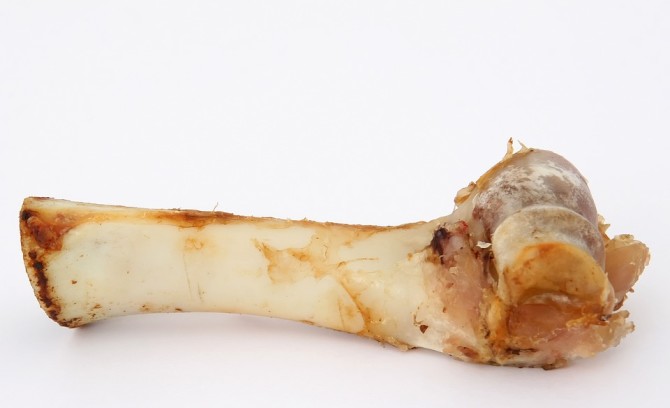
Photo courtesy of pixabay.com
Faith: This represents the bone that was used to shank someone so the Hebrew people could get the blood to put on doors. The blood on the door is the reason that the plague passed over the Hebrews so the shank bone is basically the most important part.
Maris: This bone represents the sacrifice that was made on the night before the exodus from Egypt, which is also done annually on the afternoon before Passover as well.
5. Egg
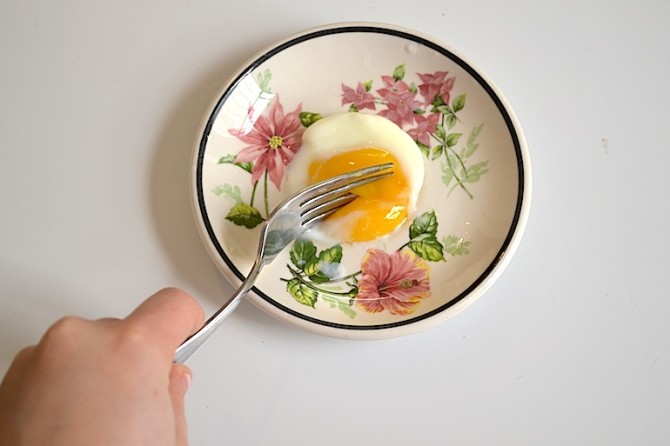
Photo by Amanda Shulman
Faith: Hebrew people loved eggs so even though they didn’t have time to properly bake the bread, they made sure to grab eggs. They ate the eggs as they left captivity in Egypt to celebrate their successful departure. Jewish people eat eggs to remember how revered eggs were in the Hebrew community.
Maris: This egg is hard-boiled, and reminds us of the Passover offering brought to the Holy Temple. Not super exciting, and also I hate hard-boiled eggs so this is probably the smelliest and worst aspect of the Seder plate.
6. Vegetable
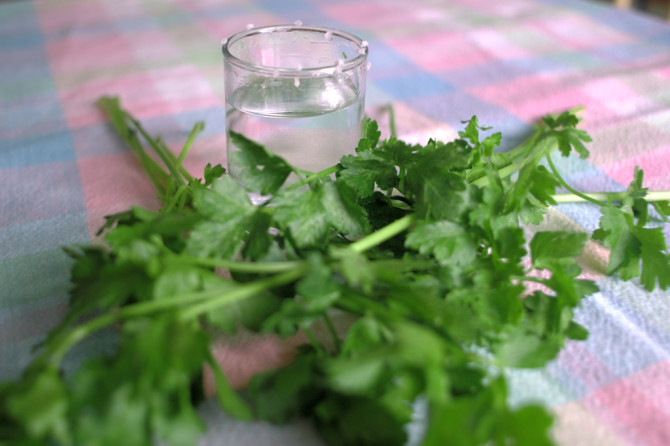
Photo courtesy of paurian on flickr.com
Faith: Moses was a vegan so he was super into vegetables. To honor him, Jewish people eat tons of vegetables on Passover. Also, Passover is when the godliest veggies are in season.
Maris: This can be a slice of onion or some celery, and is the element of the Seder plate that we dip into salt water to remind us of the tears shed when we were slaves in Egypt. Super uplifting, right? We Jews know how to celebrate.
7. Charoset

Photo by Mackenzie Barth
Faith: It’s a dryish paste of some sort. It is eaten to recall how the ground was so dry after God parted the Red Sea.
Maris: Charoset is a mixture to create a kind of paste, usually made of fruits and nuts. It commemorates the mortar used when the Jews were slaves in Egypt and built structures with bricks and mortar. During the Seder, one puts charoset and maror onto some matzah to make a little sandwich (which is delicious, by the way).
8. Afikomen
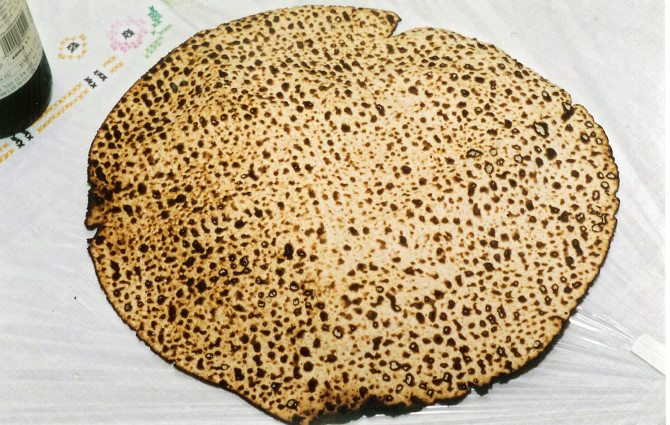
Photo courtesy of wikimedia.com
Faith: Basically, more unleavened bread. Actually, I think it might be the same type of bread as the matzah. It’s the dessert of the meal but it’s dry and plain. I’m assuming this is a penance of some sort for all of the complaining that the Hebrew people did when they got stuck in the desert.
Maris: The Afikomen is a piece of matzah that’s broken in half during the Seder, and half of it is hidden somewhere at some point in the evening. Kids go looking for it, and whoever finds it gets a prize (or some cash, which is preferable). The meaning behind this is debated, but a lot of people think it represents more sacrifice during Passover. Do you get the theme of this holiday yet? (If you don’t, it’s suffering, sacrifice and more suffering)
9. The Four Questions
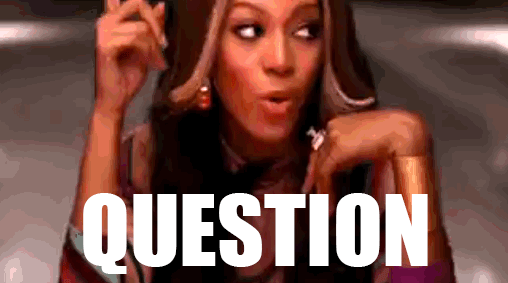
GIF courtesy of giphy.com
Faith: I have no idea so I’m just going to make an educated guess.
1. Did you enjoy the meal?
2. Can you name the 10 plagues that were unleashed on Egypt?
3. What are you thankful for?
4. Whose house will Passover be at next year?
Maris: These are a part of the Seder that remind us why Passover is different, and why it is celebrated. They are as follows:
How is this night different from all other nights?
1. On all other nights we eat chametz (bread, flour products, etc.) and matzah. Why on this night, only matzah?
2. On all other nights we eat vegetables. Why on this night, maror?
3. On all other nights, we don’t dip even once. Why on this night do we dip twice?
4. On all other nights, we eat sitting upright or reclining. Why on this night do we all recline?
10. The Ten Plagues
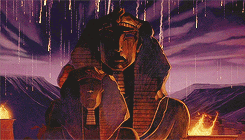
GIF courtesy of giphy.com
Faith:
Ok, so I should actually know all of these but I don’t so I’m going to wing this one too. Basically, the Egyptians were taking too long to free the Hebrew people so all hell broke loose
1. Something with cows
2. Locusts
3. Frogs in water
4. Boils
5. Water turned into blood
6. Fire rain
7. Everyone gets sick
8. Things turn into snakes
9. Earthquakes because why not?
10. Death of the first-born son
Maris: These are the plagues that God inflicted on Egypt after Pharaoh would not let the Jews go, even after Moses asked super nicely. During the Seder, we recite the plagues while pouring out a little bit of wine for each plague (or dipping fingers and putting the drops onto a plate, which is my preferred method) and we remember all that Moses and God did for us by inflicting the plagues onto the people of Egypt. They are:
1. Water into blood
2. Frogs
3. Lice
4. Flies
5. Diseased livestock
6. Boils
7. Hail and Fire
8. Locusts
9. Darkness
10. Slaying of the firstborn
So, those are most of the basics of Passover. Have fun celebrating and be sure to watch Prince of Egypt or The Ten Commandments (my personal fave, it’s super long and kind of outdated but Charlton Heston as Moses is a total babe) and have a happy Passover.



